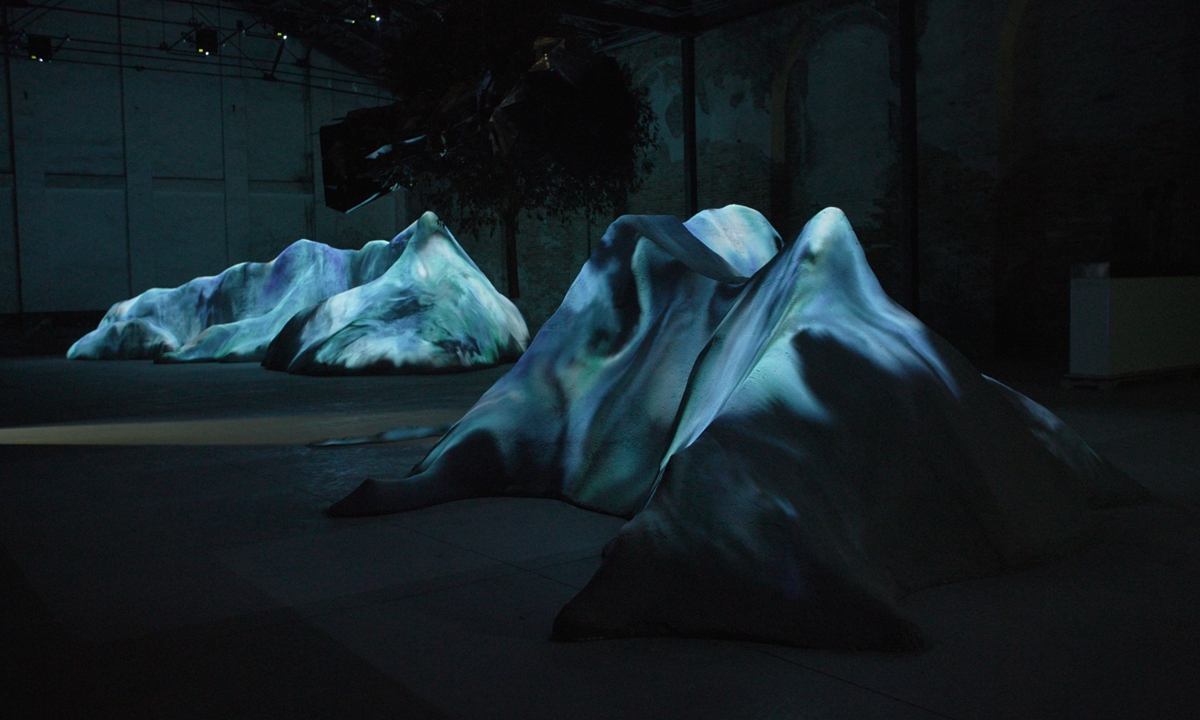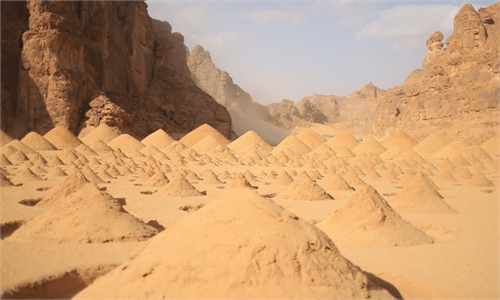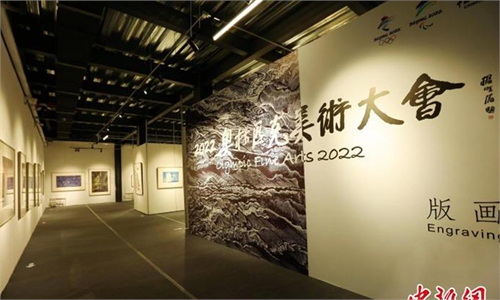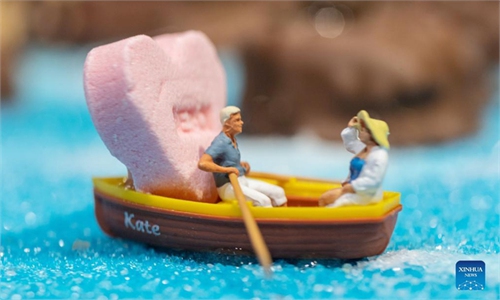ARTS / ART
China Pavilion at Venice Biennale shows tech-powered vision

3D projection mapping installation Streaming Stillness by Chinese artist Liu Jiayu at the China Pavilion at the 59th Venice Art Biennale Photo: Courtesy of Liu Jiayu
Since the 59th Venice Art Biennale kicked off in Italy on April 23, a human-machine co-made 3D projection mapping installation, Streaming Stillness, has been displaying its mythical yet futuristic oomph at the China Pavilion.Along with it, four sci-tech-inspired artworks are adorning the pavilion, which takes "Meta-Space" as its theme.
Together, they denote a new climate change in Chinese art today - weaving advanced technology into the country's long-standing philosophy. Such a vision is supported by innovative technology that serves not only the development of art in China, but also the global human issues of today and tomorrow.
Pavilion of the future
Created by Chinese new media art vanguardist Liu Jiayu, Streaming Stillness is a digital-generated work that used AI machine learning to study more than 10,000 Chinese ink wash paintings and actual terrain data and then produce a 3D mountain range looking projection mapping installation.
"It creates the terrain of China through AI-drawn maps," Liu noted in her portfolio.
Liu told the Global Times that her focus on machine learning and AI technology to create 3D art dates back to around 2018-19, during which AI-produced artworks just started to emerge in China.
Though the inner workings of the artwork sound somewhat like rocket science, the creator's inspiration actually came from the distant past - the Map of the Tracks of Yu, China's earliest atlas.
"During the eight years I spent traveling between London and Beijing, I began to feel more strongly about bringing Chinese culture into my art.
Successful new media art can make a good impact that allows more people to see Chinese cultural elements," said Liu.
Liu is not the only artist to use AI technology to introduce Chinese culture to overseas audiences and bring the nation's civilization to digital life.
Xu Lei, a Chinese artist who was born in the 1960s has brought his interactive installation Correspondence to the Biennale.
The work channels Chinese and Western aesthetics to exhibit how the conceptual nature of art can transcend its form to bring viewers a shared experience.
Meanwhile, artist Wang Yuyang has brought his Snowman and Wang Yuyang: Quarterly 2021 to discuss the dynamics between "man" and "man-made" using an AI-powered approach.
Jungle by the AT Group, a team of young creators from the Central Academy of Fine Arts' (CAFA) Institute of Sci-Tech Arts and the Tsinghua Laboratory of Brain and Intelligence (TLBI), demonstrates young Chinese's collaborative mindset toward making technological inquiries a new path for future art research.
The evolving ethos across these different generations of Chinese artists shows the trajectory of the country's art development amidst social changes is in adherence to the pavilion's theme "Meta-Space."
The China Pavilion's curator, CAFA Art Museum Director Zhang Zikang, explained that "Meta-Space" was translated from Yuanjing. It was in turn inspired by the idea lingjing, or "spiritual territory," a term used by the father of China's missile and space career Qian Xuesen to describe virtual reality.
"Yuan" echoes "Meta" that stands for the belief in infinity in Chinese philosophy, whereas "jing," the "realm of mind," refers to "space," which it has the fluidity to be in constant changes.
"In my opinion, a national pavilion at the Biennale should present the most cutting-edge artistic development of a country over the past two years." Zhang told media.
Foundation of creativity
As an artist with rich international experience, Liu observed that when using technology in art, Chinese artists' views are different from Western counterparts in that their poetic-and narrative-oriented expressions are blessed by China's cultural legacies.
"The lyrical sense of my work was inherited from the Chinese narrative pattern. Today's artists still refer to Dunhuang culture and ancient literary works," Liu noted.
"Also, I'm a woman artist, so I bring my sensibilities about nature into expression," she added.
Taking the theme "The Milk of Dream," inspired by the book of the same name by artist Leonora Carrington, the 2022 Biennale especially focuses on female artists, who make up 90 percent of the artists taking part in the event.
As chief curator Cecilia Alemani explained to media, the Biennale believes that male/female dualism makes no difference in art.
Not only has the Chinese culture brought confidence to artists like Liu, the plentiful technological resources in China has given its new media artists the strength to compete on the world stage.
"China, especially its thriving digital industry hubs like Shenzhen, can offer us the most up-to-date media art facilities. Also, China has good exhibiting resources for artists that can give them more opportunities to display their works," Liu noted.
Liu is also one of many young Chinese creators who bringing art to encourage social progress. Natural Concerto was is her work to discusses sustainability issues.
"I feel proud as I've heard a lot of foreign friends comment on how fabulous the China Pavilion is,"posted a netizen on China's Twitter-like Sina Weibo.



